by bria4123 on February 21, 2012
Anbkor Wat was erected in the early 12th century–when Gothic architecture was created. The last series of posts explored the birth of Gothic style, and the final part boasted that no other culture enclosed large spaces with walls almost entirely made from glass. True, but the people who built Angkor Wat had their own cultural patterns.
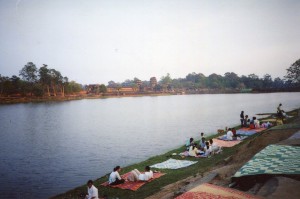
The Khmers couldn’t make stained glass windows, but they didn’t need to. They had a different way of seeing reality. [click to continue…]
by bria4123 on February 20, 2012
Nothing like the church of St. Denis’ choir had been created before, and it’s one of the most influential works of art in world history. Gothic style was born at the church’s main entrance, but it attained full glory here.
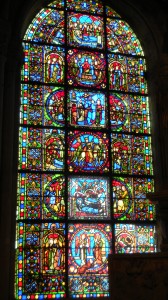
The choir’s creator, Abbot Suger, wanted light on the altar. Mission accomplished, and a whole lot more. [click to continue…]
by bria4123 on February 19, 2012
Chinese traditions are very deeply rooted, but they’re encountering new perspectives. Beijing is one of the best places to see meetings of the old and new.
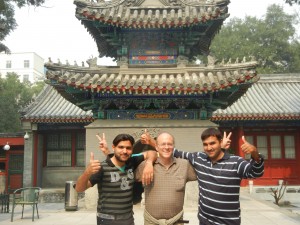
I was exploring Beijing’s Cow Street (Niujie) Mosque. It’s Beijing’s largest mosque, and it was begun back in the 10th century. Most of this mosque’s architecture resembles Chinese Daoist and Buddhist temples. So does the Great Mosque in Xi’an. I was admiring Chinese culture’s continuity, and its ability to shape all religions’ art. But then I saw the two men in the above shot.
They were leading a group of 6 young Chinese people. Thinking that they were from India, and having lived there, I asked these two men where they’re from. [click to continue…]
by bria4123 on February 19, 2012
In this next to final post on the birth of Gothic style at the church of St Denis, we’ll proceed towards the end that had the most impact on history.
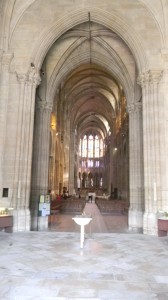
The great bronze doors are open (I’m standing between them in the above photo), so let’s walk in. Even the first few steps will bring us into an artistic revolution. [click to continue…]
by bria4123 on February 18, 2012
Here’s a different world than Gothic Style’s linear order of one god, one savior, one final resurrection.
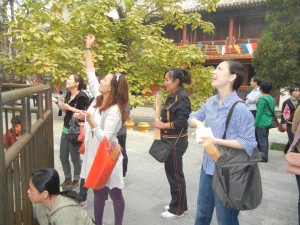
I took the 2 photos in this post in Beijing’s main Tibetan temple. Of the many traditional temples I visited in Beijing, the Lama Temple was by far the most crowded. Most visitors were young. Maybe a Height-Ashbury thing–young folks attracted to the exotic, in search of meanings beyond conventions. But this is China–conventions are very ancient and deep, and they keep surfacing, even in places where people question them. [click to continue…]
by bria4123 on February 18, 2012
The person who spearheaded Gothic style, Abbot Suger, personally provided the pair of bronze doors for the main entrance to the church of St. Denis.
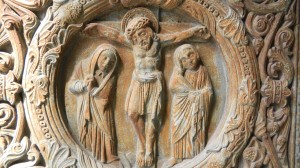
The north door (on your left as you enter), has scenes of the Passion of Christ.
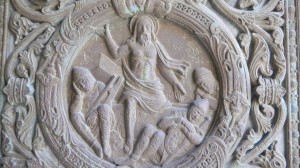
The south door has scenes of Christ’ Resurrection. There’s an important reason for this arrangement, and it’s one of the keys for appreciating Gothic style. [click to continue…]
by bria4123 on February 16, 2012
The day was a work of art. In the morning in Paris, I immersed myself in the National Museum of the Middle Ages. I then walked along the Seine River, to the hippest new museum in town, the Quai Branly. So in one day, I went from this:
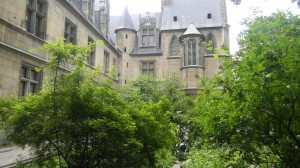 to this:
to this:
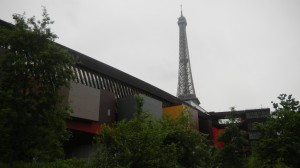
So many different art forms whirled around me that the day felt like a dance with the world. Multicultural studies bliss! [click to continue…]
by bria4123 on February 15, 2012
It hit me during my first walk in Paris–it’s more global and less French than it used to be.
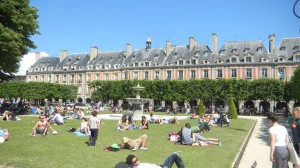
You can see many ethnic groups in an average shot at the Place des Vosges, but there were many places throughout the city where most people in view were black. Most seemed to be from West Africa. I’ve always enjoyed the exuberance and music of its traditional societies. African immigrants, and people from many other lands, are rejuvenating Paris, and adding cultural patterns that would have taxed Picasso’s imagination–and perhaps blown the mind of the British art historian Kenneth Clark. Come along for a snapshot of a few new things happening in Paris today. [click to continue…]
by bria4123 on February 15, 2012
Is this the most civilized place in the world? The great British art historian Kenneth Clark wrote that many people think it is.
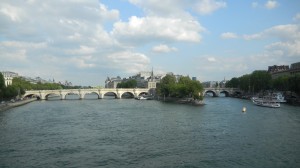
I’ve appreciated too many places outside the West to say that any place is THE most civilized. Such a statement implies standards that are embedded in a culture. But I wouldn’t argue that it’s not one of the most civilized places.
The place in question is the Passerelle des Arts in Paris. Above, you see the view from it towards Ile de la Cite, where Notre-Dame Cathedral presides. The bridge you see is the Pont Neuf, the oldest bridge in Paris, a spiritual home for many artists and writers.
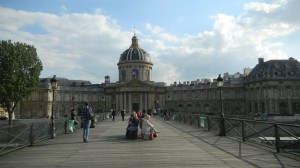
Above, you see the Institut de France, which manages about 1,000 artistic foundations. In the other direction is the mighty Louvre. In between, artists practice their drawing, and teenagers with boomboxes hang out. So in this one place, artists and great works of art converge and immerse you in more cultural patterns than any university’s academic department can process. Yeah, I could see how Kenneth Clark could be entranced here, but I found that Paris’ cultural life extends far beyond his Western focus.
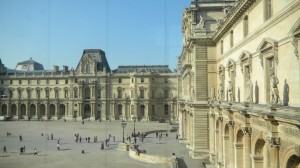
I give you an obligatory Louvre shot above. It’s worth all the time you can budget–I saw everything on display over 6 days. But these three shots only give you the conventional Western perspective of Paris. This great city is being updated by a new generation that’s cooler and more global than the hoary British art historian’s world. We’ll spread our wings farther in the next post, and see Paris from an updated perspective.
by bria4123 on February 14, 2012
The first Gothic facade differs from Indian art’s panoramic perspectives. The West advanced beyond its simple Romanesque forms in its own terms.
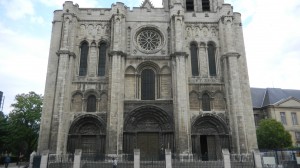
This was the first part of the church that Abbot Suger remodeled as he pioneered Gothic style. A new world was about to open up. [click to continue…]














